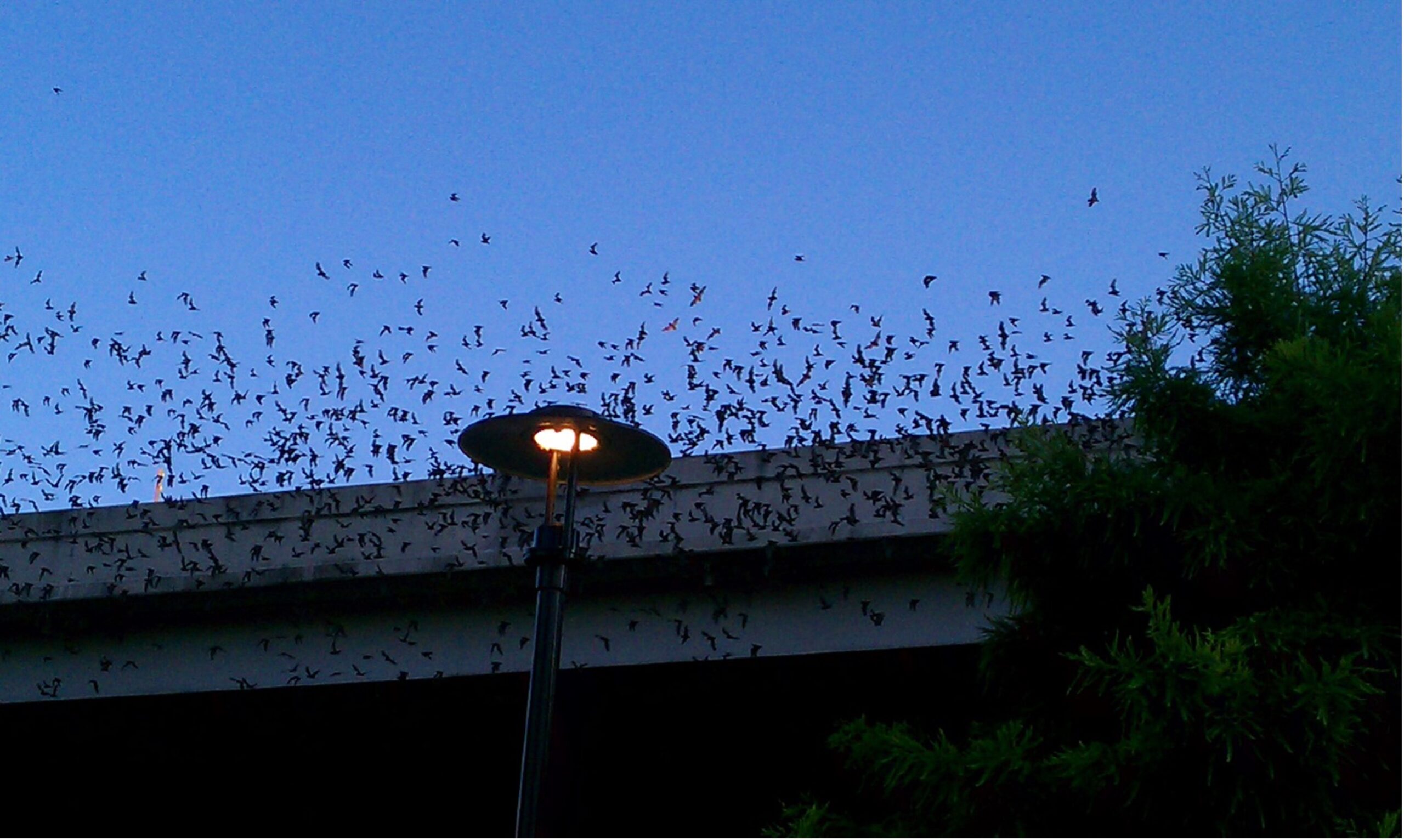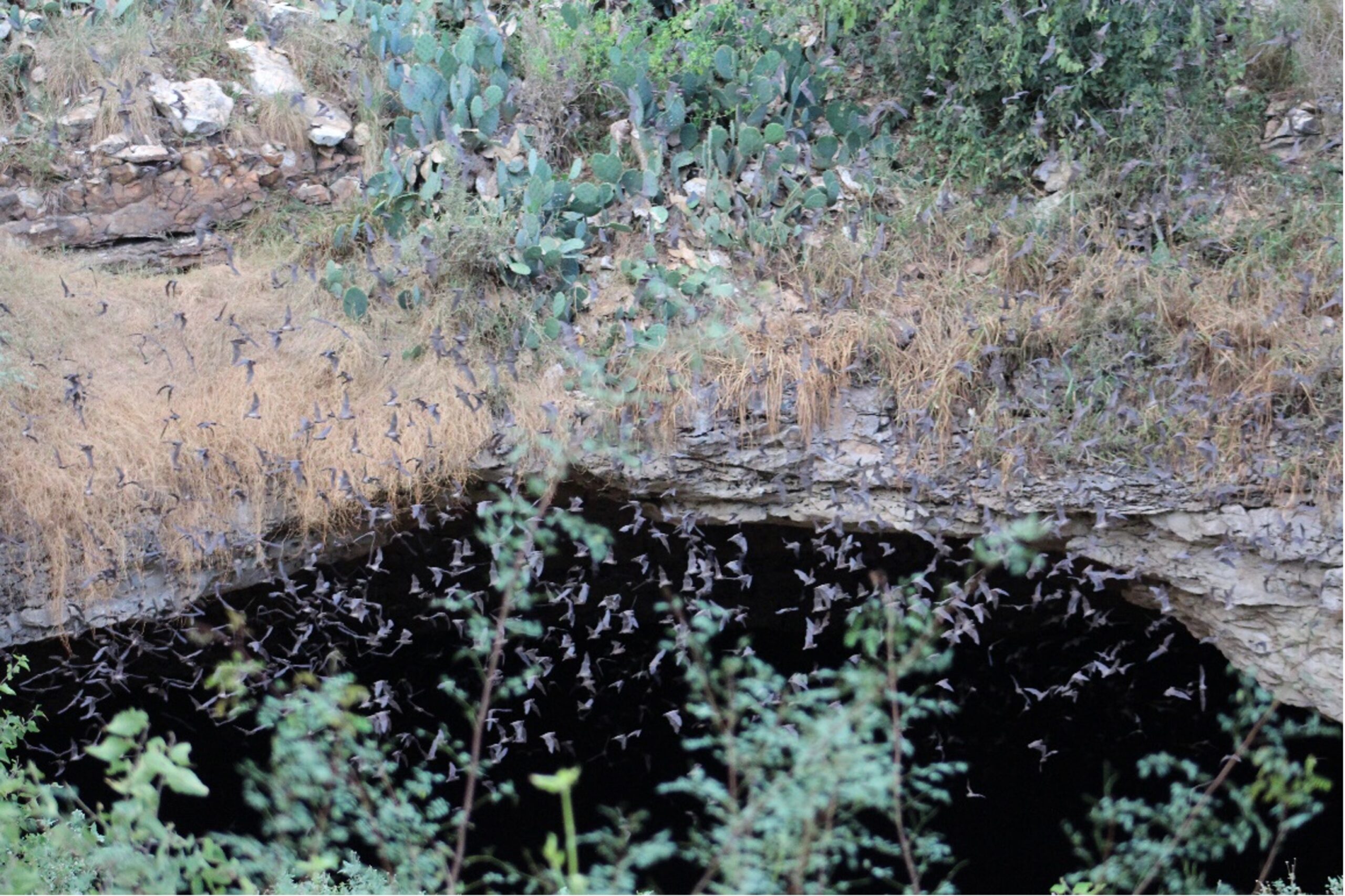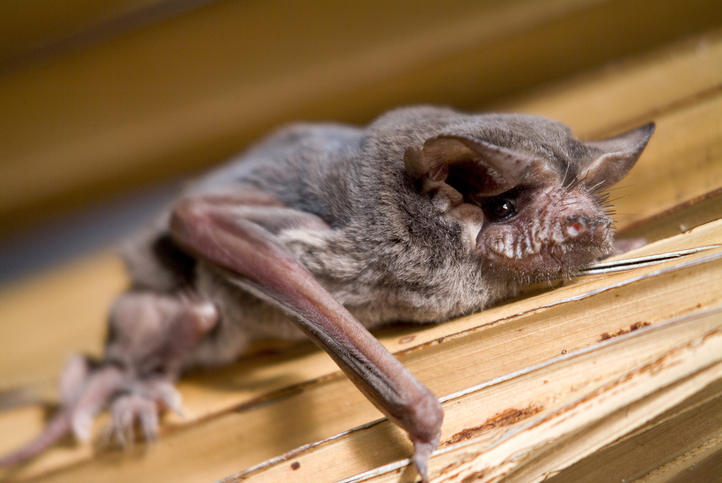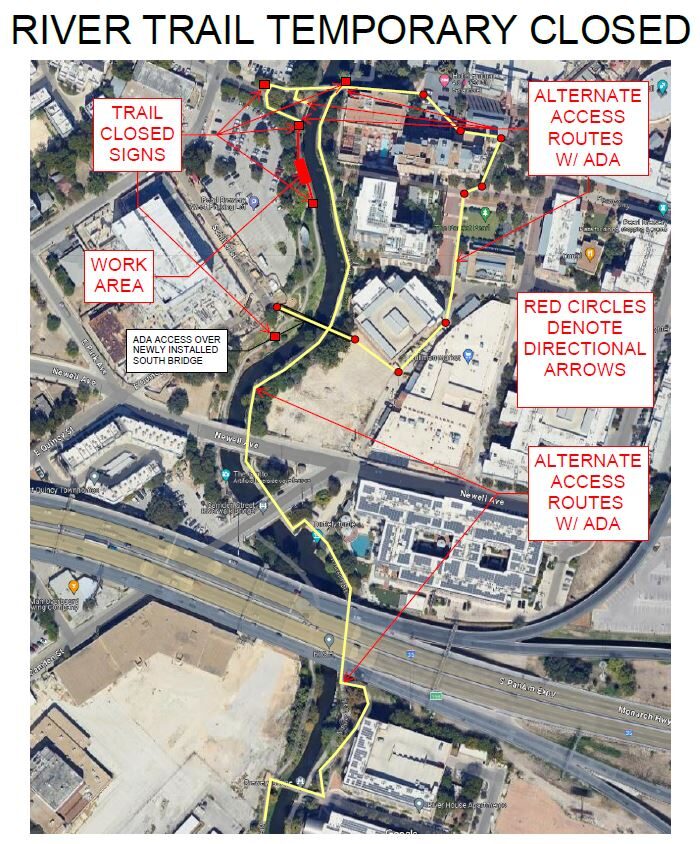Last Updated on January 30, 2024
From April to October, small, furry, flying visitors grace San Antonio and South Texas residents with their presence. It’s a bird! It’s a plane! Nope. It’s the official state flying mammal of Texas- the Mexican free-tailed bat (Tadarida brasiliensis)! Although bats are often a symbol we see during spooky season, there’s nothing spooky about them. For starters, bats are the only mammals capable of true flight. Worldwide, there are over 1,250 species of bats ranging from the giant flying fox with a 5-foot wingspan to the bumblebee bat that weighs less than a penny. In Texas alone, there are 33 different species of bats, making Texas the battiest state in the nation! Bats also have many other fascinating adaptations, like knees that bend backward, helping them to hang upside down better, and the ability to live in caves with highly hazardous levels of ammonia. Read on for more facts about these incredible creatures and the integral part they play in the San Antonio River ecosystem!
Did you know? Bats are classified in the order Chiroptera which in Latin means “hand wing.” In fact, bat wings are analogous to human hands with five fingers, including a thumb!
Bats are Beneficial!
During the summer, the 100 million Mexican free-tailed bats that reside in Central Texas consume hundreds of tons of insects every night. This ecosystem service has an estimated economic impact of $50 billion a year in North America as it helps protect crops from pests while also reducing the need for agricultural pesticides. In addition, reducing pesticide use helps the watershed because it means less polluted runoff to creeks and rivers. Bats are also very effective pollinators and seed dispersers, helping native plants, including several species of agave plants, to grow. No bats- no tequila!
So, how do they catch so many insects? Mexican free-tailed bats are nocturnal and hunt at night, eating flies, moths, and mosquitos in the dark, utilizing a unique ability called echolocation. Echolocation works similarly to sound navigation and ranging (SONAR); the bats emit high-pitched sounds, which bounce off nearby objects. When the sound bounces back to the bat, the bat can determine where that item is located, how large it is, which direction it is traveling, and how fast it is moving. Mexican free-tailed bats emit these high-pitched sounds up to 200 times per second when hunting and will consume their body weight in insects each night.

Bat myths—dispelled!
Will Mexican free-tailed bats try and suck my blood?
No! Mexican free-tailed bats only eat flying insects. However, there are 3 species of vampire bats in the world that cut small slits in sleeping mammals and birds and lap up the blood with their tongue. All vampire bats live in Central/South America.
Will bats fly into your hair?
Although they are curious by nature, bats will not purposely touch you. They may fly close to check you out, but their navigation system is so good they likely won’t ever touch you.
Can bats carry rabies?
Any mammal can carry rabies. Although less than 1% of bats in the wild are infected with rabies, an encounter with a rabid bat can be deadly. Therefore, the CDC advises people to avoid direct contact with bats and, if it happens, to seek medical attention immediately. Head here for more information on bats and rabies.
How Can I observe Bats Safely?
One of the safest ways to observe bats is as they emerge at dusk to begin their nighttime hunting. Keep reading to find out where you can see a Mexican free-tailed bat emergence along the San Antonio River.
Did you know that there is a bat colony residing under the Interstate Highway 35 (IH-35) Bridge over the Museum Reach of the San Antonio River Walk? To see the bats, face the IH-35 bridge around the intersection of Camden and Newell Streets and watch carefully from about ten minutes before to ten minutes after dusk in mid-April thru mid-October.
Why did the bats form a colony under the highway?
- Deep, narrow crevices running on the underside of the bridge are the perfect width for a bat to squeeze into and great for keeping out predators.
- The bridge is very high, which allows them to fly out of the bridge easily as they can fall a few feet to gain speed.
- Bats need a warm environment for birthing their young. The asphalt on top of the bridge absorbs the scalding Texas sun all day, keeping the bridge nice and warm and acting as a perfect incubator.

The space, height, and temperature of the bridge make it a perfect area for bats to stay during the summer—a “BATchelor pad,” if you will! Can’t get batty enough? Check out the Texas Parks and Wildlife Department’s list of the best bat-watching sites in Texas.

Did you know? Located only 30 minutes from downtown San Antonio, Bracken Cave is home to the world’s largest bat colony, with more than 15 million Mexican free-tailed bats.
How can I help bats?
The best way to help bats is to become an amBATssador! Learning more about bats helps to dispel myths and misconceptions about these incredible mammals!
Another great way to help local bats is by planting native plants which attract the pollinating insects that bats eat and reducing your use of pesticides. From protecting local crops to pollinating, bats are an integral part of the San Antonio River Watershed in which we reside, and healthy ecosystems are essential for ALL life to thrive!
The River Reach is back!
River Reach is a quarterly, 12-page newsletter that is designed to inform the San Antonio River Authority’s constituents about the agency’s many projects, serve as a communication vehicle for the board of directors and foster a sense of unity and identity among the residents of Bexar, Wilson, Karnes, and Goliad counties.
If you wish to be placed on the mailing list for River Reach, please contact us or complete the form below





